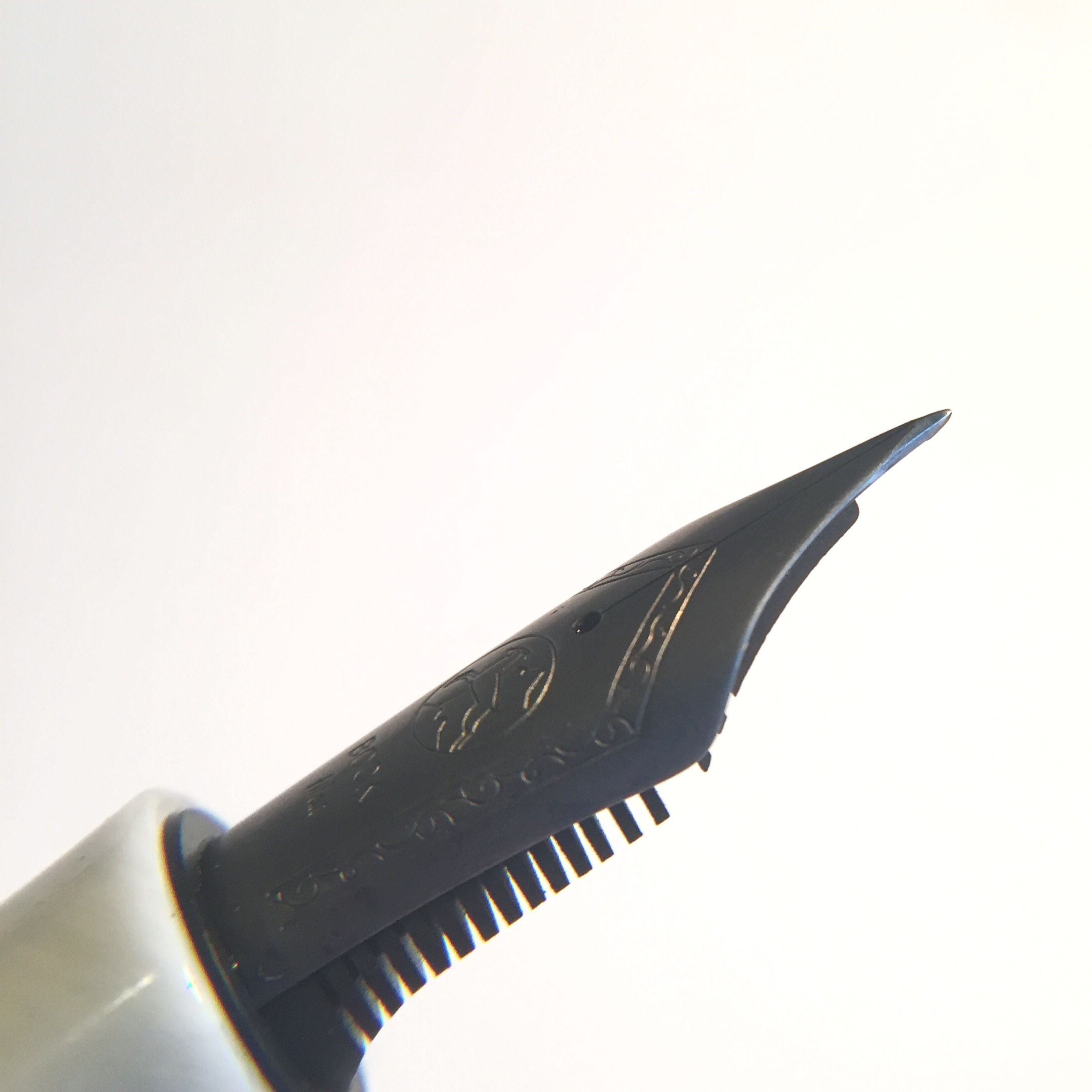If you’re unsure where to start on your custom-nib journey, a Cursive Italic can be a great first (or second, or third, or fourth…) grind! The broader the tipping size you start out with, the more line-width variation you’ll be able to see. That means that the down strokes will be broader, making them more distinct from the narrow cross-strokes. Cursive Italic grinds do require some getting used to, though; they can’t be rotated while writing.
This Cursive Italic grind was done on a Broad JoWo nib on a beautiful Newton Pens body. The ink is Waterman Serenity Blue.
















